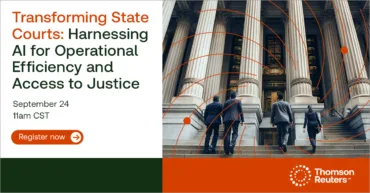With the arrival of efficacious vaccines at the beginning of 2021, state and local governments were optimistic that COVID-19 and its “side effects” — remote working and learning, an overwhelmed healthcare system — would soon be under control.
It didn’t work out that way. Agencies continued to struggle with the stresses the virus and its variants placed upon health, education, and other services. Programs designed to keep families and businesses afloat during the pandemic opened the doors to new instances of fraud. And many cities have experienced a surge in crime following the social unrest of 2020, with law enforcement often unable to keep up.
And as if those headaches weren’t enough: The “great resignation” — the departure of retirees (and others) from the workforce — means that state and local government agencies have been losing valuable expertise and institutional knowledge. Thanks to an intensely competitive market for talent, agencies are finding it difficult to find qualified hires to fill those departures.
As someone charged with managing public services, you probably know all this, and all too well. In 2021, you and your colleagues learned how to adjust to these challenges, developing new ways to work and to work together. It looks as though you’ll need to keep putting those lessons to work. The new year is carrying over many of the same challenges you faced last year — and may even intensify them.
A lot of funding, a lot of fraud
Among its other negative effects, COVID-19 has provided fraudsters numerous new opportunities to steal from the public. The U.S. Justice Department’s news feed on coronavirus fraud provides depressingly abundant evidence that people are stealing millions of dollars in relief funds. (The good news from the feed: Many are being caught and prosecuted.)
This is a crime wave many state and local governments have been battling. More than half of the 308 government professionals surveyed by the Association of Government Accountants (AGA) in September reported an increase in the risk of fraud since the pandemic’s onset. Respondents noted that fraudsters focused primarily on benefits payments and on purchases of personal protective equipment (PPE) used to reduce the spread of the virus. Fraudulent vendor payments were cited by 89% of survey respondents as a particular source of risk.
State and local agencies that oversee public funds will need to be extra-vigilant in 2022. While billions in federal pandemic relief funds have been disbursed, the national State and Local Fiscal Recovery Funds program is still providing support for state and local COVID relief efforts. Other federal programs will require state and local governments to oversee even more money and to prevent its fraudulent misuse.
Even if COVID-19 finally recedes, healthcare providers and reimbursement systems will continue to be stressed throughout 2022. Unemployment insurance also remains a target of potential fraudulent claims. True, initial and continued claims have been very low in late 2021 and early 2022, despite an Omicron-fueled jump at the beginning of January. Still, workers in some sectors, notably hospitality, remain beset by layoffs and a lack of job prospects.
Enlisting tech in the fight
The AGA report also noted that government entities often don’t have the resources to fight the rising tide of fraud. Indeed, 70% of those surveyed cited a lack of resources as their biggest obstacle to identifying and fighting fraudulent activity. In addition, 47% of respondents say that agencies in their geographical area aren’t working together to battle these threats.
In sum, the challenges government agencies face in protecting information and programs are as formidable as ever. Adding to the challenges: Ongoing remote work will continue to make collaboration efforts between agencies and departments difficult.
During the pandemic, numerous government entities battling fraud have discovered that tech tools can help make up for resource shortages. These tools can also maintain lines of communication and collaboration, particularly if government program integrity teams continue to operate largely outside of a central office.
One digital tool that can help agencies protect the public is Thomson Reuters CLEAR. The CLEAR platform brings together numerous data sources, streamlining workflow while helping identify and anticipate criminal activity.
Here’s to a 2022 with less stress — or at least with better ways to manage it.
Thomson Reuters is not a consumer reporting agency and none of its services or the data contained therein constitute a ‘consumer report’ as such term is defined in the Federal Fair Credit Reporting Act (FCRA), 15 U.S.C. sec. 1681 et seq. The data provided to you may not be used as a factor in consumer debt collection decisioning, establishing a consumer’s eligibility for credit, insurance, employment, government benefits, or housing, or for any other purpose authorized under the FCRA. By accessing one of our services, you agree not to use the service or data for any purpose authorized under the FCRA or in relation to taking an adverse action relating to a consumer application.












